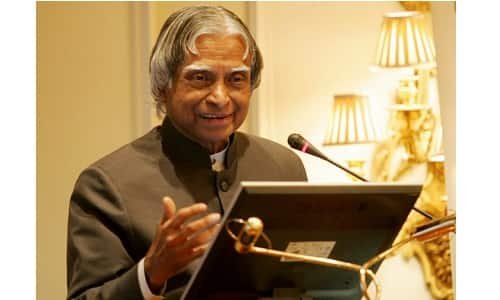The Indian Constitution acknowledges 22 official languages, and depending on the linguistic diversity of its residents, every state could have one or more official languages.
Languages in India
India is one of the most varied countries in the world, with 121 official languages and an astounding 270 mother tongues.
In India, there is no official language. The official language of the Union, nevertheless, will be Hindi in Devanagari script, as stated in article 343(1) of the Indian Constitution. While clause 3 of the Official Languages Act of 1963 stipulates the “Continuation of English Language for official purposes of the Union and use in Parliament,” the appearance of numerals to be utilized for official purposes of the Union will be the international form of Indian numerals. Indian English and Modern Standard Hindi are hence the two official languages of India.
| S.N. | Name of State | Capital Name | Official Language | Language |
| 1 | Andhra Pradesh | Hyderabad | Telugu | Telugu, Urdu, Hindi, Tamil and Marathi |
| 2 | Arunachal Pradesh | Itanagar | English | Nishi, Adi, Bengali, Nepali and Hindi |
| 3 | Assam | Dispur | Assamese | Assamese, Bengali, Hindi, Bodo, Nepali |
| 4 | Bihar | Patna | Hindi | Hindi (Bhojpuri and Magadhi dialects), Maithili, Urdu, Bengali and Santali |
| 5 | Chhattisgarh | Raipur | Hindi | Hindi (Chhattisgarhi), Odia, Bengali, Telugu and Marathi |
| 6 | Goa | Panaji | Konkani | Konkani, Marathi, Hindi, Kannada and Urdu |
| 7 | Gujarat | Gandhinagar | Gujarati | Gujarati, Hindi, Sindhi, Marathi and Urdu |
| 8 | Haryana | Chandigarh | Hindi | Hindi (Haryanvi and Mewati dialects), Punjabi, Urdu, Bengali and Maithili |
| 9 | Himachal Pradesh | Shimla | Hindi | Hindi, Punjabi, Nepali, Kashmiri and Dogri |
| 10 | Jharkhand | Ranchi | Hindi | Hindi (Bhojpuri, Magadhi, and Nagpuri dialects), Santhali, Bengali, Urdu and Odia |
| 11 | Karnataka | Bangalore | Kannada | Kannada, Urdu, Telugu, Tamil and Marathi |
| 12 | Kerala | Thiruvananthapuram | Malayalam | Malayalam, Tamil, Tulu, Kannada and Konkani |
| 13 | Madhya Pradesh | Bhopal | Hindi | Hindi, Marathi, Urdu, Sindhi and Gujarati |
| 14 | Mizoram | Aizawl | Mizo, English & Hindi | Mizo, English, Hindi, Manipuri and Chakma |
| 15 | Manipur | Imphal | Meitei (Manipuri) | Manipuri, Nepali, Hindi and Bengali |
| 16 | Maharashtra | Mumbai | Marathi | Marathi |
| 17 | Meghalaya | Shillong | English | Khasi, Garo, Bengali Nepali and Hindi |
| 18 | Nagaland | Kohima | English | Ao, Konyak, Angami, Sema and Lotha |
| 19 | Odisha | Bhubaneswar | Odia | Odia, Bengali, Telugu Hindi and Santali |
| 20 | Punjab | Chandigarh | Punjabi | Punjabi and Hindi |
| 21 | Rajasthan | Jaipur | Hindi | Rajasthani and Hindi |
| 22 | Sikkim | Gangtok | English | Bhutia, Hindi, Nepali, Lepcha, Limbu |
| 23 | Tamil Nadu | Chennai | Tamil | Tamil, Telugu, Kannada, Urdu, and Malayalam |
| 24 | Telangana | Hyderabad | Telugu | Telugu, Urdu, Marathi Kannada and Hindi |
| 25 | Tripura | Agartala | Bengali, English & Kokborok | Bengali, Tripuri, Manipuri, Kakborak |
| 26 | Uttarakhand | Dehradun | Hindi | Hindi (including the Garhwali, Kumaoni, and Jaunsari dialects) |
| 27 | Uttar Pradesh | Lucknow | Hindi | Hindi (including Awadhi, Bhojpuri, Braj Bhasha and Khari Boli dialects) |
| 28 | West Bengal | Kolkata | Bengali | Bengali |
22 Official Language of India
There are 22 official languages recognized by the government of India. There are:
22 Official Language of India |
|||
| S.N. | Name of Official Language | S.N. | Name of Official Language |
| 1 | Assamese | 12 | Manipuri |
| 2 | Bengali | 13 | Marathi |
| 3 | Bodo | 14 | Nepali |
| 4 | Dogri | 15 | Odia |
| 5 | Gujarati | 16 | Punjabi |
| 6 | Hindi | 17 | Sanskrit |
| 7 | Kannada | 18 | Santali |
| 8 | Kashmiri | 19 | Sindhi |
| 9 | Konkani | 20 | Tamil |
| 10 | Maithili | 21 | Telugu |
| 11 | Malayalam | 22 | Urdu |
Indian States and their Official Languages
Hindi and English as Official Languages
According to the Eighth Schedule of the Indian Constitution, Hindi and English are the two official languages of the Indian federal government. State governments, however, are free to select their official languages.
- English is additionally utilized extensively in business, education, and government at the national level because of its global importance and historical significance
- Hindi is the language most commonly spoken in India and is used as a lingua franca in many parts of the nation, especially in the northern and central regions.
- India’s dedication to tolerating speakers of many languages and its linguistic variety is reflected in the selection of Hindi and English as official languages.
States with Multiple Official Languages
Multiple official languages are used in several Indian states to reflect the linguistic diversity of their residents. For instance, Tamil Nadu accepts Tamil and English whereas Karnataka recognizes Kannada and English as its official languages.
- Both Kannada and English are recognized as official languages of Karnataka, which has Bengaluru as its capital.
- Tamil Nadu, another southern state, recognizes Tamil and English as official languages. Kannada, the state’s principal language, is essential to maintaining Karnataka’s cultural legacy.
- Tamil is extremely important to the state’s culture and history.
Andhra Pradesh and Telangana
Multiple official languages are used in several Indian states to reflect the linguistic diversity of their residents. For instance, Tamil Nadu accepts Tamil and English whereas Karnataka recognizes Kannada and English as its official languages.
- Both Kannada and English are recognized as official languages of Karnataka, which has Bengaluru as its capital.
- Tamil Nadu, another southern state, recognizes Tamil and English as official languages.
- Kannada, the state’s principal language, is essential to maintaining Karnataka’s cultural legacy.
- Tamil is extremely important to the state’s culture and history.
Kerala’s Unique Status
Malayalam is the only official language in Kerala, the only state in India. Malayalam has a long literary history and a high literacy rate.
- The majority of people in Kerala speak Malayalam, which is the official language of the state.
- The Malayalam script is distinctive and different from other Indian scripts, giving the state’s linguistic uniqueness.
- It is well known for its rich literary heritage, with many well-known poets and writers contributing to its cultural legacy.
Sikkim’s Distinct Languages
To preserve and promote its unique cultures, Sikkim now recognizes Lepcha, Bhutia, and Limbu as associate official languages in addition to Nepali, the state’s official language.
- Bhutia, Lepcha, and Limbu are now recognized as associate official languages in Sikkim, demonstrating the state’s dedication to maintaining its indigenous cultures.
- The preservation of the cultural history of Sikkim’s different communities depends heavily on these languages.
Nagaland’s Diverse Languages
16 tribal languages are recognized by Nagaland as official languages to preserve the state’s linguistic diversity.
- The language of business communication is English.
- The astonishing diversity of Nagaland’s indigenous population is reflected in the sixteen tribal languages that have received official recognition.
- English, the state’s official language, is essential for communication with the rest of India as well as with other tribal tribes.
Language Preservation Efforts
In India, numerous states have started initiatives for language promotion and preservation.
- The Odia Bhasa Pratisthan (Odia Language Institute) is devoted to encouraging the growth of the Odia language through publications, research, and cultural initiatives.
- Language preservation efforts like these are crucial for sustaining linguistic diversity and cultural heritage.
Efforts for Minority Languages
There have been efforts made by several states to protect and advance minority languages. For instance, Dogri, Kashmiri, and Urdu are recognized as the official languages of Jammu and Kashmir.
- The state of Jammu and Kashmir’s designation of Dogri, Kashmiri, and Urdu as official languages demonstrates its dedication to maintaining the area’s linguistic variety.
- In the union territory, several languages have considerable cultural and historical significance.
Union Territories
Language laws differ in union territories like Delhi and Puducherry. • Puducherry recognizes Telugu, Tamil, Malayalam, and French as its official languages because of its colonial heritage.
- Delhi, while not a state, utilizes Hindi and English extensively for official communication.
- Delhi, while not a state, uses both languages extensively.
- Hindi and English are essential for administrative purposes because the city’s diverse population speaks a variety of languages.
- Puducherry’s recognition of Telugu, Tamil, Malayalam, and French as official languages illustrates its distinct colonial history, with French being used for some administrative and legal purposes.
Important Facts
- One estimate places the number of languages in India that are regarded as mother tongues at 1652.
- The Indian Constitution currently recognizes 22 major Indian languages, which are listed in the 8th Schedule.
- Sanskrit, Bangla, Assamese, Bodo, Gujarati, Dogri, Hindi, Konkani, Kashmiri, Kannada, Manipuri, Maithili, Malayalam, Nepali, Marathi, Punjabi, Sindhi, Oriya, Telugu, Santali, Tamil, and Urdu are among the 22 major languages spoken in India.
- The Indian Constitution’s 8th Schedule initially only listed 18 languages.
- India’s two official languages are Hindi and English. There is no national language in India, according to the Constitution, because the document’s authors wisely believed that all languages are significant.
- In terms of total speakers, Hindi, Marathi and Bengali are the top 3 languages in India.
Conclusion
Each state has a different official language, which reflects the linguistic variety of the country. While Bengali, Tamil, Telugu, and Gujarati are all widely spoken in different parts of the country, English and Hindi are the official languages of the central government. India’s diverse linguistic landscape, which has always played a key role in defining the nation’s identity, reflects the country’s rich culture and history.

Rahul Kumar is a passionate educator, writer, and subject matter expert in the field of education and professional development. As an author on CoursesXpert, Rahul Kumar’s articles cover a wide range of topics, from various courses, educational and career guidance.




